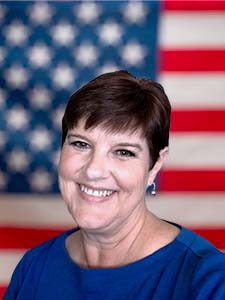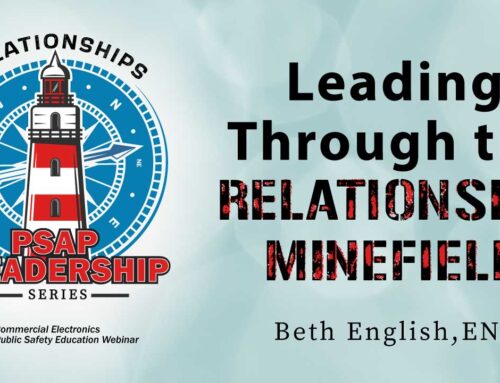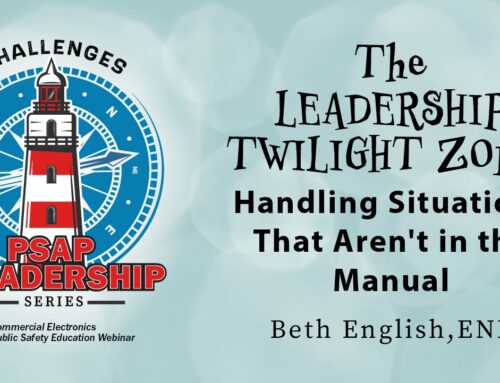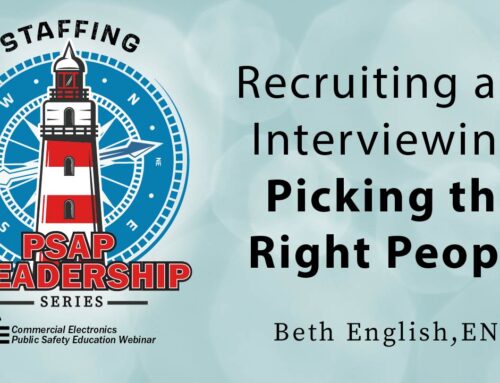But wait there’s more: NG9-1-1!
NG9-1-1 technologies have become a necessity with an increasingly mobile and networked society. Vital information can be received, captured and shared in real time, including text, video, data, GIS, and more. NG9-1-1 is taking PSAPs to the next level of modern communications.
In her November webinar, “9-1-1 Technology for Non-Engineers: How the Magic Happens”, Beth went over how the magic happens from the beginning of 9-1-1 through wireless and VoIP. In this webinar, she will cover the rest of the story, and build on what was previously covered and show what’s in progress for NG9-1-1. she will also discuss what NG9-1-1 is, and what it isn’t.
This class is for new employees and those who aren’t new but want to understand how the magic happens.
Webinar Notes
In the last episode…
In our previous episode of 9-1-1 technology we discussed communications, starting with Morse code, the invention of the telephone, how 9-1-1 transitioned from basic 9-1-1 to enhanced, going through wireless, and on to VoIP. In this episode we are going to get more in depth into VoIP and how that will transition into NG9-1-1. Keep in mind that this is a very basic explanation of what we are working towards.
So, let’s start by going back to VoIP. Remember with VoIP, the calls are going over the internet rather than copper lines and to do that SIP is used.
What is SIP?
So, what is SIP? SIP is Session Initiation Protocol. And just so you know, a protocol is just a standard set of rules that allows electronic devices to talk to each other.
The job of SIP is to set up a call, a conference, or other interactive communication session and then terminate it when it’s over. So, SIP sends an “invite” to the other user and basically asks them to participate. If they accept, then SIP will make the connection, and then terminate it when finished. During the session, SIP has no idea what’s going over the connection.
If you’ll remember, in VoIP the caller’s voice is digitized and converted into small packets and sent over the network, then put back together as voice signals at the other end. Once the call has been setup, the phones basically go into a “data transfer” phase of the call using different protocols, like RTP or real-time transport protocol, to move the voice packets between the two phones. It does the same thing with video data for real-time streaming.
The thing about SIP, though, is that it’s flexible. It was designed to be able to set up real time multi-media sessions between participants. Think Skype and Instant Messenger. And it’s going to be used to set up real time multi-media sessions between 9-1-1 callers and telecommunicators, dispatchers and first responders, and more.
But first…
With the implementation of VoIP, new databases and processes were needed. So, let’s start with the new databases we needed to be able to deliver the call and provide functionality of E9-1-1. Starting with the Register Database.
Register – Location Registration Database – Initially with VoIP, users had to register their VoIP location. And if they had nomadic VoIP, they had to remember to register their location any time they moved their device, which may be a computer, tablet, or VoIP phone. So, a location registration database had to be created for what’s called the civic location, or the address provided by the end user.
ESQK – Emergency Services Query Key – This is similar to the pANI in a wireless call. The ESQK is delivered to the Selective Router and as the calling number to the PSAP, but it’s not a dialable number. The ESQKs will generally display as your area code and either as a 211 number or a 511 number.
CRDB – Call Routing Database – With VoIP, callers were now able to call 9-1-1 from a non-native telephone number, or a phone number that wasn’t associated with the caller’s location. This is very common now with number portability, but at the time it was strange to see a 9-1-1 call come in from a non-native number. So, to be able to route those calls, the VoIP Service Providers could pre-provision the customer’s record in what was called a “TN to PSAP”, or telephone number to PSAP, 10-digit emergency number database that used the subscriber’s telephone number as a key. Basically, their call would be routed to a 10-digit number that would go through the PSTN to an emergency line at the PSAP. It worked as far as delivering the call, but it didn’t provide any ALI information.
ERDB –The Emergency Routing Database contains routing information associated with each Emergency Service Zone (ESZ). This is what routes the calls and pulls up the responding agencies to display in the ALI screen.
VDB – Validation Database – This database validates the civic address against the MSAG to ensure that it’s a correct address. For example, the caller registers their address as 1000 Creek Side Ct, but it’s in the MSAG as 1000 Creekside Ct. The VDB validates that to ensure it’s a correct address. It doesn’t necessarily mean that’s where the caller is, just that the address is a valid address in the jurisdiction.
New Processes
ESGW – In addition to new databases, new functionality was also needed. As stated previously, there are two parts to a call, one of which is the setup. Part of the setup is the Emergency Services Gateway (ESGW). The ESGW is the signaling point between the IP domain and the conventional trunks to the Selective Router (SR) that use tones or electronic signaling. The ESGW uses the routing information provided in the received call setup signaling to select the appropriate trunk (group) and proceeds to signal call setup toward the SR using the ESQK to represent the Calling Party Number/Automatic Number Identification (ANI) information. Basically, the ESGW is a gateway between the 9-1-1 switch and the internet call.
VPC – The VoIP Positioning Center (VPC) is the element that provides routing information for the routing of VoIP emergency calls and helps in delivering location information to the PSAP over the existing ALI database. The VPC also supports access to the routing data in the ERDB
What NG9-1-1 is and is not.
One common misconception about NG9-1-1 is that it is the ability to receive text. While it’s true that text is/will be possible with NG9-1-1, that’s not what the difference is between E9-1-1 and NG9-1-1. The concept of NG9-1-1 is in the delivery of the call; changing from call delivery through CAMA trunks, which is a technology that is over 50 years old, to delivering 9-1-1 calls and data via IP. CAMA trunks were Centralized Automatic Message Accounting trunks originally developed for long distance billing, and are circuits. So, 9-1-1 will go from being circuit switched to packet based. It will have the same capabilities as E9-1-1, but location will go from being MSAG based to GIS, or Geo-Spatial Information, based. Also, it won’t be just a local service anymore; it will be operable at the county, region, state and national levels.
What’s driving NG9-1-1?
Since 9-1-1 first started, the types of devices and services that can be used to call for help have increased dramatically and 9-1-1 needed to catch up. So NG9-1-1 is changing the way communication centers do business, by changing the call delivery technology, the call location technology, and the information that can be delivered to responders. It will also provide some resilience in the networks and allow for virtual PSAPs. Imagine being able to login and take calls from home during a disaster instead of having to drive in through it, dodging flying cars, or falling off into a creek you couldn’t see. Agencies will also be able to share information with other agencies that there is no way of sharing right now.
ESInet
It starts with the ESInet. In 2007, the NENA i3 standard introduced the concept of an Emergency Services IP network, the ESInet. This network is designed as an IP-based inter-network, or network of networks, shared by all agencies that can be involved in an emergency. With the ESInet, agencies will be able to transfer calls, messages and other data to any another agency in the US and internationally. This network of networks will be made up of regional networks, state networks, and eventually a national network.
Spiderweb
For a visual, think of it as a spider web. Each space in the web is a network, whether regional or state, and all these networks make up the ESInet as a whole.
So much information can come in with a 9-1-1 call that isn’t currently utilized because there is no way of sharing that information. With the ESInet, agecies will be able to do that. But how is that going to happen?
FirstNet
FirstNet is a broadband network dedicated to first responders. Currently, most first responders use a commercial network for their mobile applications by having hot spots in their vehicles. What this means is that police, fire and EMS who use mobile terminals are all on the same network that you are using to call your Aunt Florence, play Candy Crush, and text your BFF on. Most of you know how congested the internet gets in the evenings when the normal working world gets home from work, and how it may take as much as 30 seconds to a whole minute for your game to load or your email to send! You also know that when a disaster happens, many people can’t place calls from their cell phones because the network is clogged. And when the network is clogged, that means that data can’t get to the units in their vehicles when you need it to, or vice versa. Think about how many times you have been sitting at your position, checking a units’ status because he’s been en route to a call for 20 minutes, only for him to snap at you that he checked out 10 minutes ago. But CAD hasn’t caught up with his status change because his hot spot is circling the drain of the congested network. Or, what about when your agency goes through a massive weather event, and cell towers go down, units have no way of accessing any data. Nor can they call in on their cell phones.
During the worst fire in California history, in 2018, they had difficulty getting information to and from their large incident vehicle because their “unlimited data” had been throttled by their wireless carrier, seriously hindering their ability to do what they needed to do.
It was because of incidents like this that a network was created that would allow information to flow more quickly to and from responders without having to deal with the commercial network congestion. And in 2017 AT&T was selected to build this network. Since then over 10,000 public safety agencies have joined FirstNet.
How does FirstNet work?
Now, you may be wondering what the difference is between FirstNet and the commercial network, since they are both networks. Picture it as a double decker highway at rush hour. On the bottom is a 6-lane highway…3 lanes going each direction. Cars are backed up, bumper to bumper, moving at the blinding speed of 10 to 15 mph. The entrance ramps are also backed up so no one can get on the highway. The highway signs are flashing a message that says, “Due to heavier than normal traffic, only Smart cars and Ford Fiestas are allowed to enter the highway. All others must exit immediately until further notice”. These lanes are the commercial wireless network.
Now, the top of the double decker is also 6 lanes, 3 in each direction, but the only vehicles allowed on it must have a public safety “toll tag”, so to speak. So, there are police cars, fire apparatus, ambulances, cars carrying telecommunicators, off duty personnel, state agencies, federal agencies, etc. There’s traffic, but it’s moving along smoothly, at or move likely, above the speed limit (you know how we are!) and units are entering and exiting the highway with no issues. These lanes are the FirstNet lanes. FirstNet can be accessed not only by MDTs or MDCs, but also by smartphones, smart watches, tablets, routers, certain radio headsets…just about anything anyone would use to communicate with someone else.
There are also other options to be used in the event of widespread disasters, such as Satellite Cells on Wheels and Flying Cells on Wings (called COWs), and their latest, the aerostat, or blimp, known as FirstNet One.
GETS/WPS
On a side note…since NG9-1-1 is far off off for a good portion of agencies, and disasters are happening every day, causing issues with network and wireless congestion, the FCC has taken steps to alleviate these issues by developing the GETS and WPS programs.
GETS is a program in which you can register your 9-1-1 and non-emergency lines and circuits with the FCC to be restored as a priority above other businesses and customers. Otherwise, even though the LEC knows you are a 9-1-1 center, oftentimes they will add you to their list of lines to bring back up, and you may be listed behind the car wash (and yes, that’s a true story!).
The WPS program provides a way to get your wireless calls through as a priority when the wireless networks are heavily congested.
Both services are free and the last time I checked, the FCC would actually register the numbers for you. You can also do it online. One suggestion, though, is that when you register your agency provided phone numbers, do it by position rather than name. That way you don’t have to change it every time someone new takes the position.
How will NG9-1-1 be different?
In a picture, E9-1-1 and NG9-1-1 will be different in several ways:
| E9-1-1 | NG9-1-1 |
| Complex analog trunking and data network (Because nothing is easy with original telephone equipment) |
Engineered, managed IP networks (ESInet) |
| Class 5 switch for Selective Router (Expensive) |
IP software selective routing function |
| Translation based control (Complicated) |
GIS and database controls |
| Limited to voice calls | Voice, text, video |
| Data bandwidth 20 char (digits) | Bandwidth unlimited |
| Complex Emergency Gateway Network for VoIP | Direct handling of Internet sourced calls |
| Custom interfaces for each service type (Each piece of equipment is proprietary) |
Standard IP interface for all service types |
Besides the difference in the routing of 9-1-1 calls and what devices can contact emergency services, there will be a difference in the way callers are located, which brings us even more functions and acronyms.
New call routing
Let’s look at these new databases and functions in the order they will be used in an NG9-1-1 call.
LIS – Location Information Server. When a 9-1-1 call is placed, this database will be queried for the location of the caller which may be delivered in the form of an IP address, a circuit ID, or a MAC address.
LVF – Location Validation Function is a functional element in next generation core services where civic location is validated against the GIS database. This is similar to MSAG validation now.
ECRF – Emergency Call Routing Function. This is a function in an ESInet that basically returns a routing location used to route an emergency call to the correct PSAP. Eventually, the MSAG will go away and calls will be routed based on GIS location information. There’s a lot more to it but this is the simple version.
ESRP – Emergency Service Routing Proxy selects the next hop routing in the ESInet based on location and policy. During a 9-1-1 call, there are several hops in the ESInet and the LIS is checked several times for updated information. The “call” is connected to the PSAP, or to put it better, the media is connected to the PSAP, because the call may not be a call but text or video, or anything else that can be sent.
PRF – Policy Routing Function determines the next hop in the SIP signaling path using a policy.
LNG – Legacy Network Gateway interfaces with the legacy 9-1-1 network and the ESInet. As you have probably heard, some agencies have already moved to NG9-1-1, while others are fighting to get the equipment to be fully E9-1-1. Since moving to NG9-1-1 is going to be a process that’s going to take some time, the new network has to be able to work with legacy 9-1-1. Once we have all transitioned to NG9-1-1, the SR and ALI will no longer be used.
So, let’s look at the very basic call flow in NG9-1-1.
The device acquires a location before the call is made and the location is queried in the LIS. It gets pre-validated, whether civic location or geo location, and then the ECRF is queried for routing, which it provides for the next hop.
The call is placed and it’s sent to the ESRP1 with the location. The LIS is checked for any location updates, and the ECRF is queried for the next hop.
The call is sent to the ESRP2 with the location and the LIS is queried again, then the ECRF is checked again for the next hop.
The PRF is queried at each hop to evaluate the policy rules and the call is sent, with the location, to the PSAP. The LIS is checked again for updates.
And finally, the call is connected to the PSAP, the media is sent, and the LIS is checked again for updates. Keep in mind, the LIS being checked at each point is similar to your 9-1-1 equipment doing auto-rebids now. It’s constantly checking for location changes.
How do we get there?
So, how are we going to go from what we have, to what we need? A few of you may already be on an ESInet, but for the rest of us we can do it one of two ways.
We can convert from E9-1-1 to NG9-1-1 by using transitional interfaces, such as Apps, and equipment ad-ons. You may already be using some of these, such as Rapid SOS, RapidDeploy, Smart9-1-1, etc.
The other way is to use an interim approach then convert. There are Gateways that will allow current OSP (Open Settlement Provider) and PSAP interfaces to work during transition.
The Challenges
Now, getting to NG9-1-1 is not going to be without its challenges. As with everything, it’s going to cost money, and we’ve got to find a way to come up with that money while still paying for the legacy equipment. While we are transitioning to NG9-1-1, costs are going to double because you’ll be paying for two networks. Also, the size of your area is going to make a difference. It’s usually cheaper to buy in bulk, so if you are part of a large agency, you’ll get better pricing. But if you work for Bugtussle PD, with two positions, it’s going to cost more.
Not too long ago, public safety grants were opened up to public safety Communications for the first time. Having a grant writer on your side could assist in getting some of those funds. This is where you may want to utilize someone from a local college who could help. We also may have to consider changing the 9-1-1 fees or finding more funding sources. The fact that NG9-1-1 will benefit the public with its functionality could help convince the public to cooperate in raising rates, or even convince some vendors, such as IP providers, to help fund the systems.
There will also be jurisdictional challenges. If there are multiple jurisdictions or services on the same ESInet, that means that everyone will be sharing the costs and the responsibilities. Take for instance. There are probably about 35 jurisdictions in a 50 mile radius. So, who would be in charge? A board? The Police? Fire? Communications? That will all have to be worked out in advance and hopefully, no one is left lying in the dust from the turf war.
Long way to go
It’s going to take time, money, training, equipment, etc. to get everyone to the same point on NG9-1-1. There are numerous challenges for public safety, but there are also numerous rewards for the public.

After 36 years as a public safety communications professional, Beth English is a believer in PSAP QA. She has seen firsthand, the positive effects QA can have on an agency, both internally and externally. Beth has been a popular trainer, presenting at state and national telecommunicator training conferences on topics that have included contingency planning, public education, employee recognition, in addition to productive and constructive criticism. She earned her Master Telecommunicator Proficiency Certification from Texas Commission on Law Enforcement (TCOLE) and served as President of the Texas Chapter of the National Emergency Number Association (NENA). During her time with us at Commercial Electronics, Beth wore multiple hats including developing this webinar training series geared toward public safety telecommunicator professionals which we continue to make available.





